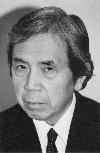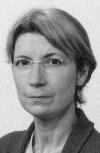We Hear and Play facts
Timeframe
If a child begins using We Hear and Play at the appropriate
age, they will develop absolute pitch after approximately two years.
A child can be expected
to learn absolute pitch before they are 4˝ years old. The
best time to begin training is between 3-3˝. Parents often don't think of
their children as "teachable" at this age, and neglect the best time for
learning absolute pitch.
A preschool child rarely has a natural drive toward piano instruction.
The decision to play a musical instrument is usually made by the parents. If
it is left to the child, by the time they are capable of making such a
decision they will have lost the most important years for musical
development.
After only
one year, a We Hear and Play student will have developed the basic perception of absolute pitch.
As the student continues to study music, their ear will continue to
develop.
Goals
Starting
between age 3 and 4˝, We Hear and Play teaches your child abilities which
include:
- absolute pitch skill
- development of rhythmic feeling
- a sense for
musical structure
- musical literacy
- harmonic perception
- creative freedom in musical production.
Purpose
Our method is radically different from conventional piano instruction
because our students also learn absolute pitch.
Every child can learn absolute pitch.
Many people believe that this ability is innate and can't be learned. Our extensive experience
shows otherwise. Some necessary conditions for learning include:
- beginning ear training at the appropriate
age;
- the use of a suitable instrument;
- parental cooperation in We
Hear and Play training.
The piano is the best instrument for training absolute pitch. This means
that parents who wish to train their child in this method must own a piano
in excellent condition.
A positive atmosphere is crucial. Preschool
children can only be taught if the material is made entertaining and
fun, so that the children will want to play. Teaching preschool
children should never involve mechanical drilling or rote lessons.
Benefits
Many examples
demonstrate that absolute hearing offers many significant advantages in playing
music.
It cannot be denied that people with absolute pitch have a clear ability to
perceive sound. This facilitates playing and composing. Without absolute pitch,
composing is usually only possible with the aid of an instrument. There are
plentiful examples of musicians who, upon reading or hearing a piece of music,
can immediately reproduce the work from memory. In the majority of these cases,
the musician has absolute pitch.
The advantages of such aural clarity for conductors and violinists is
self-evident; for a pianist, absolute hearing is advantageous in several areas.
The time it takes to learn new pieces is shortened considerably. The pianist is
able to play more easily from memory, and therefore can command a larger
repertoire. The absolute musician, with definitive discrimination of tonal
sensations, phrasing, and harmony, may concentrate on the artistic
interpretation in its entirety. Now, of course, the ability to command a large
repertoire is not dependent solely on absolute pitch; to be sure, absolute pitch
does not replace knowledge of music theory. Our experience shows that students
with absolute pitch may grasp and apply music theory more quickly than other
artists.
Our method for acquiring absolute pitch is, at the same time, beginning piano
instruction. At the conclusion of this course, a child may continue to study
piano, or easily change to another instrument.
Authors
 This method was conceived by
Naoyuki Taneda, former professor at the National University for Music in Karlsruhe,
Germany. Mr. Taneda is a piano educator and pianist. This method was conceived by
Naoyuki Taneda, former professor at the National University for Music in Karlsruhe,
Germany. Mr. Taneda is a piano educator and pianist.
Mr. Taneda received his education as a pianist at the National University for
Art and Music in Tokyo, Japan. He has won national piano competitions in Tokyo
on multiple occasions. His course of study involved intensive, multiyear concert
activity in Japan, coupled with orchestra concerts, chamber music, and premiere
performances of modern music. During this course of study, he began to work with
children and youth piano pedagogics, which formed the basis for his later
success.
In 1962, after a stay in Vienna, Mr. Taneda began teaching at the
municipal academy for music in Darmstadt, where he worked with the academy’s
students as well as other children. He began to notice clear differences between
these German students and Japanese students, and began to experiment with different methods of piano
instruction to find out which were most suitable for German children.
In addition to teaching, Mr. Taneda has presented numerous concerts in Germany
and other European countries. Since 1967, he has achieved international acclaim
for his teaching and the performances he led at the Karlsruhe music university.
Aside from this, as a music university professor, he applied himself intensely
towards the musical development of children and youth. He spearheaded many
seminars, presentations, and advanced education organizations in Germany,
England, Korea, and Japan.
Since 1994, Mr. Taneda has taught at several universities in Japan. In
addition to extensive international concert activities, Mr. Taneda leads piano
master courses and is especially interested in piano instruction for children.
 In collaboration with his wife,
Ruth Taneda, his method of teaching absolute
pitch underwent a multiyear trial phase and gradually expanded. She taught classes of preschool children at the Ettlingen music school, using this method, and without exception
her students gained absolute pitch, in addition to many other abilities. In collaboration with his wife,
Ruth Taneda, his method of teaching absolute
pitch underwent a multiyear trial phase and gradually expanded. She taught classes of preschool children at the Ettlingen music school, using this method, and without exception
her students gained absolute pitch, in addition to many other abilities.
Ruth Taneda studied music education and musicology at the Music University of
Karlsruhe in Germany. From 1978 until 1994 she taught music in secondary school
and high school, and in 1984 she began teaching and developing the We Hear and
Play curriculum at the Ettlingen music school. Since moving to Japan in 1994,
she has taught private piano lessons in Tokyo.
|

